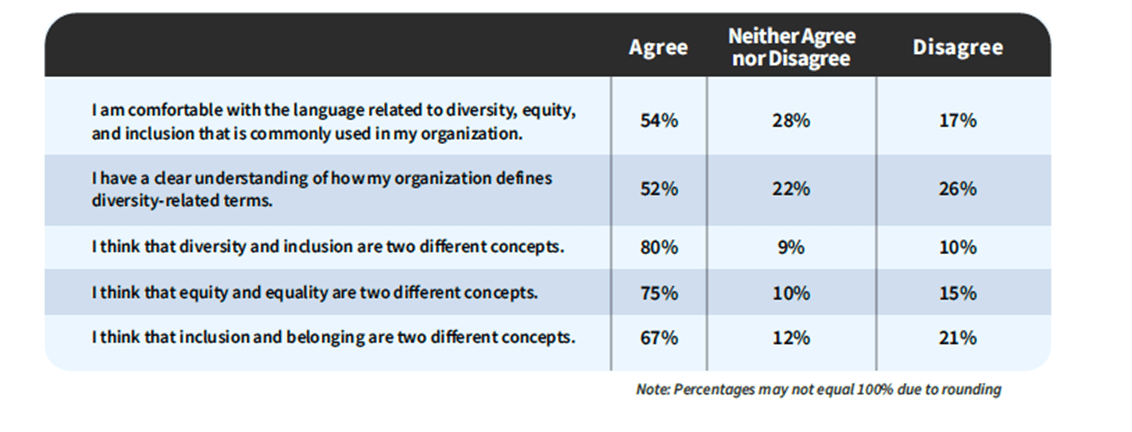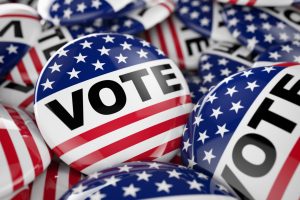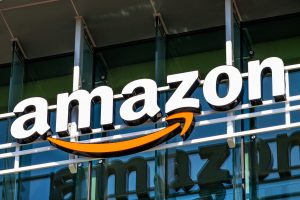General Electric details split into three companies, defining the language of DE&I, and Meta removes thousands of ad targeting topics
Also: Coca-Cola launches experiential Christmas campaign, Robinhood shares information on ransomware attack, and more.
Hello, communicators:
Coca-Cola launched its Real Magic platform in September to move away from communicating with customers using only broadcast ads and instead offer an ecosystem of experiences and content that includes online stories, scavenger hunts and more.
Now, the company, long known for its Christmas ad campaigns, has unveiled the first Christmas campaign under the Real Magic banner. The campaign will allow customers to request a personalized video from Santa over the Cameo platform and include a livestreamed event featuring surprise celebrity guests and more.
“Coca-Cola has always believed in the magic of Christmas and this year, our campaign celebrates the real magic of human connections,” global chief marketing officer Manolo Arroyo said in a press release. “With a simple and uplifting message of unity, inclusion and positivity at its heart, it aims to remind us that all we need for a magical Christmas is shared moments with community and the ones we love.”
“We’ve taken the traditional meet-and-greet with Santa Claus and turned it into a more accessible, authentic and personalized experience,” added Cameo chief business officer Arthur Leopold. “And we look forward to enhancing future holiday celebrations by providing access to more iconic figures we know and love.”
Coca-Cola’s focus on making its virtual experiences feel personal brings the seasonal cheer and merrymaking associated with its iconic Santa Claus character while serving the changing engagement preferences of its customers. It also offers an example of how a new technology or software partnership can be launched with the intention to amplify the behaviors and feelings that customers already associate with your brand.
Here are today’s top stories:
General Electric emphasizes culture and responsibility with restructuring announcement
Industrial conglomerate General Electric (GE) announced yesterday that it will break into three separate businesses focused on aviation, health care and energy.
According to its press release:
GE Chairman and CEO H. Lawrence Culp, Jr. said, “At GE we have always taken immense pride in our purpose of building a world that works. The world demands—and deserves—we bring our best to solve the biggest challenges in flight, healthcare and energy. By creating three industry-leading, global public companies, each can benefit from greater focus, tailored capital allocation, and strategic flexibility to drive long-term growth and value for customers, investors, and employees. We are putting our technology expertise, leadership, and global reach to work to better serve our customers.”
Culp continued, “Today is a defining moment for GE, and we are ready. Our teams have done exceptional work strengthening our financial position and operating performance, all while deepening our culture of continuous improvement and lean. And we’re not finished—we remain focused on continuing to reduce debt, improve our operational performance, and strategically deploy capital to drive sustainable, profitable growth. We have a responsibility to move with speed to shape the future of flight, deliver precision health, and lead the energy transition. The momentum we have built puts us in a position of strength to take this exciting next step in GE’s transformation and realize the full potential of each of our businesses.”
What it means:
Culp’s words on reducing debt, being strategic with capital allude to the challenges GE faces without framing its predicament as a dire solution. His statement demonstrates how to communicate the opportunities that drive restructuring decisions while remaining positive and optimistic.
The statement also demonstrates how your leadership can unite customers, investors and employees by emphasizing shared values like culture and responsibility.
MEASURED THOUGHTS
In a new report from the Institute for PR, only 54% of communications leaders said that they felt comfortable with the DE&I language commonly used within their organization, while 52% have a clear understanding of definitions relating to diversity. Meanwhile, 20% said they did not recognize the difference between the terms “diversity” and “inclusion.” A quarter did not understand “equity” and “equality” as distinct terms and only 23% saw “inclusion” and “belonging” as separate terms.

These discrepancies in agreed upon DE&I terms suggest that many communicators are participating in the constriction of DE&I programs, or messaging around those programs, at their organizations.
Announcing the PR Daily Leadership Network
PR Daily is launching the PR Daily Leadership Network, a unique membership group from Ragan Communications offering peer-to-peer advisory and team training along with a unique slate of resources and events to help public relations professionals break through the noise, increase their visibility and forge meaningful connections.
The Network provides daily insights and coverage on a range of topics including media relations, social media, measurement, Diversity, Equity & Inclusion, branding, thought leadership and crisis communications.
“The fast pace of change coupled with the demand on public relations professionals to protect and sometimes defend their company’s reputation make it imperative for leaders to tap into the wisdom of other communicators and continue to learn and grow,” says Diane Schwartz, CEO of Ragan Communications. “The PR Daily Leadership Network provides the answers but also encourages members to question the status quo and push for positive change.”
Visit leadership.prdaily.com to learn more.
CRISIS COMMUNICATIONS
Stock trading app Robinhood said it was the victim of a ransomware attack last week when hackers accessed the personal information of 7 million customers and demanded payment. Robinhood said that the attack was contained, and it believed no social security, bank account or card numbers were exposed.
The unauthorized party socially engineered a customer support employee by phone and obtained access to certain customer support systems. At this time, we understand that the unauthorized party obtained a list of email addresses for approximately five million people, and full names for a different group of approximately two million people. We also believe that for a more limited number of people—approximately 310 in total—additional personal information, including name, date of birth, and zip code, was exposed, with a subset of approximately 10 customers having more extensive account details revealed. We are in the process of making appropriate disclosures to affected people.
After we contained the intrusion, the unauthorized party demanded an extortion payment. We promptly informed law enforcement and are continuing to investigate the incident with the help of Mandiant, a leading outside security firm.
“As a Safety First company, we owe it to our customers to be transparent and act with integrity,” said Robinhood Chief Security Officer Caleb Sima. “Following a diligent review, putting the entire Robinhood community on notice of this incident now is the right thing to do.”
After paying a record fine earlier this year for providing customers with false or misleading information, Robinhood faces added pressure to be proactive in defending its brand reputation. Sima’s statement on what it owes its customers seems to acknowledge this, as does the company’s detailed breakdown of what it learned and how many customers were affected differently by the hack.
Its inclusion of the phrase “socially engineered,” however, is an example of how industry or niche terms can misfire when trying to address a crisis. The admission invites additional questions around how its data privacy practices enforced among its customer support employees.
TAKE OUR SURVEY
The HarrisX – Ragan CEO/Communicators Competencies Survey is looking for chief communications officers, senior vice presidents and top comms officers to take our first-of-its-kind poll. The survey seeks your feedback on what you consider to be the most important skills and attributes communicators must master—and we’re asking your CEO as well.
The findings—and comparisons of CEO views vs. those of communicators—will be announced during Ragan’s Communications Week Nov. 15-19 and in a special report this winter.
Can you spare a few minutes to help us chart the future of the communications role?
Meta removes thousands of ad targeting topics
Meta, the social media company formerly known as Facebook, announced that it will prevent advertisers from targeting promotional content to people based on their health, race and ethnicity, political affiliation, religion, sexual orientation and thousands of other topics. The new policy, which takes effect Jan. 19, will extend to all Meta products including Facebook, Instagram, Messenger and the company’s third-party audience network.
Meta’s VP of product marketing for ads, Graham Mudd, wrote in a blog post:
We strongly believe that the best advertising experiences are personalized. They enable people to discover products and services from small businesses that may not have the ability to market them on broadcast television or other forms of media. They also enable non-profits, social causes and organizations to reach the people most likely to support and benefit from them, such as connecting people to fundraisers for charitable causes they care about.
At the same time, we want to better match people’s evolving expectations of how advertisers may reach them on our platform and address feedback from civil rights experts, policymakers and other stakeholders on the importance of preventing advertisers from abusing the targeting options we make available. Today, we’re announcing a difficult decision that balances these important considerations.
The decision to remove these Detailed Targeting options was not easy and we know this change may negatively impact some businesses and organizations. Some of our advertising partners have expressed concerns about these targeting options going away because of their ability to help generate positive societal change, while others understand the decision to remove them. Like many of our decisions, this was not a simple choice and required a balance of competing interests where there was advocacy in both directions. We feel confident that we can evolve our ads system to meet the needs of everyone we serve, while working diligently to continue supporting one of the best things about our platforms — helping people connect with and discover the businesses and organizations they care about.
Why it matters:
Meta’s latest move to reform its privacy practices builds on last week’s announcement that the company will shutter its facial recognition program. It also demonstrates the boldest move to change its business model yet, as its proprietary and niche ad targeting topics have driven a large share of the company’s revenue. The company’s ad targeting practices also created countless reputational crises, including the Cambridge Analytica scandal in the wake of the 2016 election.
Mudd’s post begins with a statement of its values, referencing small businesses, non-profits and “social causes” as those its ad targeting tools are intended to help before announcing the change based on feedback from multiple concerned parties. It ends with an acknowledgment that some ad partners will be concerned about losing their ability to target people based on controversial behavioral profiles.







